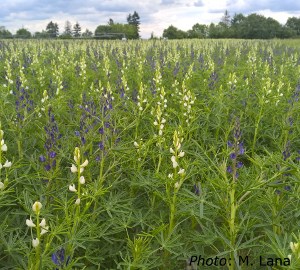Final report: Facilitating reduced- and no-tillage organic grain legume production systems through integration of cover crop mulch for weed control
Project responsible: Alexander Menegat, Department of Crop Production Ecology, SLU., SLU Uppsala.
Project group: Ortrud Jäck and Göran Bergkvist, Department of Crop Production Ecology, SLU Uppsala; Per Ståhl, The Rural Economy and Agricultural Societies, Östergötland.
Aims of this project are to develop and test weed management strategies for reduced- and no-tillage faba bean and lupin production. This will be achieved by the strategic use of biological characteristics of a cover crop and associated ecological mechanisms facilitating soil nitrogen management and weed suppression.
Field experiments will be set up at two sites with contrasting soils. A non-leguminous reference crop (buckwheat) will be included to account for N effects. Early flowering cultivars of green rye will be used as cover crop, providing rapid biomass production and hence strong competition for light, water and nutrients, suppressing weeds during autumn and early spring. Roller crimping will terminate and mulch the rye in spring.
The experiments comprise four main treatment combinations:
- No cover crop, ploughing before sowing of grain legume/reference in spring, weed control with up to three hoeing passes (inversion tillage/standard farmers practice).
- Ultra-shallow tillage of cover crops in spring followed by direct seeding of grain legumes/reference crop, mechanical weed control with up to three hoeing passes (reduced tillage strategy with hoeing).
- Roller crimping of cover crop at anthesis in spring followed by direct seeding of grain legumes/reference crop, no additional mechanical weed control (no-till strategy with roller crimping, late sowing).
- Interseeding of grain legumes/reference crop into standing cover crop followed by roller crimping shortly after emergence of the interseeded grain legume (no-till interseeding strategy, with roller crimping, early sowing).
Data collection:
- Biomass and C:N ratio of cover crop
- Soil temperature and soil moisture
- Soil total N and mineral N content
- N effect of the legumes and different management strategies on the subsequent crop.
- Nitrogen fixation
- Weed and crop density, phenological development and biomass accumulation
In two experiments, the rye crop is established during autumn 2020, lupin/faba bean/buckwheat in the spring 2021, and the residual effect is studied in a spring sown cereal 2022. Two more trials are established the autumn 2021.
